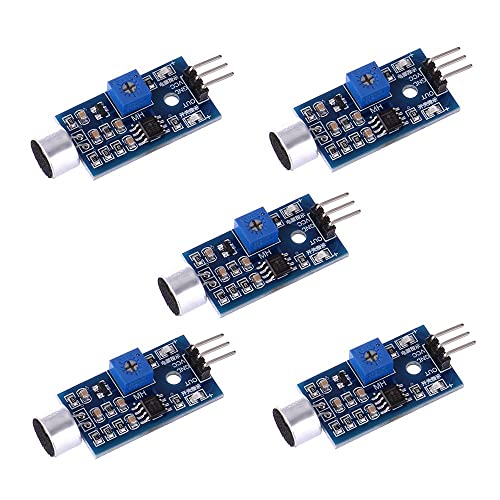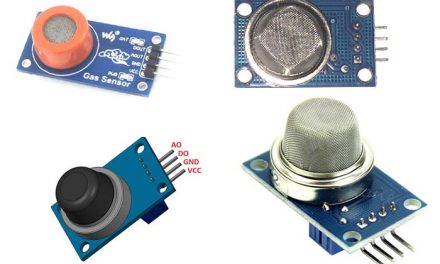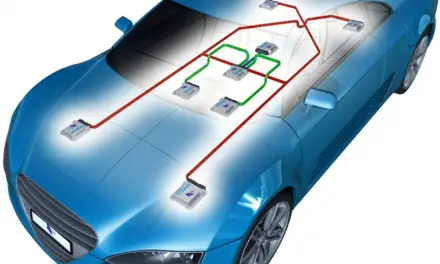We all listen to music. We admire the talent exhibited by artists that have beautiful voices. In order for those voices to be recorded, there is a need for sound sensors to detect the audio. This article explains the various sound sensor types.
Before we start explaining the different types of sound sensors, let us define the term sound sensor.
Table of Contents
What is a Sound Sensor?
A sound sensor is defined as a sensor which converts air pressure variations due to sound into electrical current.
How do Sound Sensors Work?
Sound detection sensors work very much like the human ear. The various sound sensor types have a diaphragm that converts the vibrations in the air into electrical signals. The sound sensors are capable to determine noise levels within the range of frequencies that a human is able to hear.
These sensors are commonly known as microphones.
Types of Sound Sensors
There are the following types of sound sensors:
1. Carbon Microphone
This is a sound sensor type that was one of the earliest available microphones. It uses the concept that the resistance of carbon granules decreases when they are compressed. This decrease in resistance occurs because when the granules are compressed, they come into better electrical contact.
This microphone is made up of carbon granules that are contained within a small container that is covered with a small metal diaphragm. A battery is needed to cause a current to flow through the microphone. When sound waves strike the microphone’s diaphragm it vibrates, exerting a varying pressure onto the carbon.
This varying pressure is then translated into varying levels of resistance, which in turn varies the current passing through the microphone. The varying current can be passed through a transformer or a capacitor to enable it to be used within a telephone, or by some form of amplifier.
This sound sensor type has a frequency response that is limited to a narrow range, and produces significant electrical noise. It would also produce a crackling noise which could be eliminated by shaking it or giving it a small sharp knock to enable the carbon granules to produce a steady current.
2. Ribbon Microphone
This type of sound sensor is made up of a corrugated aluminium ribbon that is suspended edgewise between poles of a magnet. It is designed with small gaps between the edges of the ribbons of the magnet side, causing it to be moved by the velocity of the air rather than the sound pressure acting upon it. This is why this microphone is also referred to as the velocity microphone.
These microphones are made with an electrically simple design, with no active components. They were quite popular for high quality audio applications in the past.
3. Dynamic Microphone
This sound sensor type is widely used for stage, musical performances and other applications. It is one of the most widely used forms of free standing microphones. It has a simple design and offers cost effective microphones.
This microphone is made up of a magnet and a diaphragm to which a coil is attached. The assembly is held in place by an outer casing and the coil can move freely over the magnet. As the sound waves hit the diaphragm, the col moves backwards and forwards within the magnetic field and an electric current is induced in line with the incoming sound vibrations.
This microphone is very sturdy and can tolerate comparatively tough handling. They are able to handle high sound levels without distorting the sound. They do not require an internal preamplifier unlike microphones such as the condenser microphone.
4. Condenser Microphone
This type of sound sensor has the widest frequency response, and is able to provide high quality audio. It consists of a thin membrane in close proximity to a solid metal plate. The membrane acts as a metal diaphragm and is electrically conductive. Older types of microphones used thin metal foils, but more modern types use one that is plastic coated one, with gold or aluminium. An example is the gold-sputtered mylar.
The construction described above results in a capacitor being created in the range of 10 to 50 pico-farads. This type of sound sensor needs a DC voltage to be applied. This can be supplied using a battery, or along the coaxial line to the microphone. When the power is supplied using the coaxial line, this is referred to as phantom power.
The voltage supplied pulls the diaphragm taut. When sound waves are incident on the microphone, the diaphragm moves forwards and backwards. As a result, there is a change in capacitance. This change in capacitance in turn leads to a change in the voltage.
These microphones need a buffer amplifier as the impedance present in this sound sensor type is quite high. They are not as robust as the dynamic microphone as the internal construction is quite delicate.
They do not perform well in humid environments as high levels of humidity may cause internal flashover between the back plate of the microphone element. In addition, these microphones are highly sensitive.
As a result, they can be overloaded by very loud sounds, and therefore great care needs in selecting these sound sensor types for applications where they will not get overloaded.
Applications of Sound Sensors
1. Home Automation Systems
In these systems, the sound sensors can be used to control the lighting of light bulbs in the house by detecting whistles or claps instead of physically turning the light switch on or off.
2. Recording Studios
The sound sensors are used in microphones, which are used by artists such as singers, voice over artists to record their work.
3. Communication
Microphones are present in communication devices. Mobile phones have sound sensors, the old telephones had sound sensors in them, and laptops have integrated web cameras that come with microphones.
4. Spying Systems
Microphones can be used by government intelligence agencies to record sound. The various sound sensors are planted in the suspect’s home, office and car and they listen to the information recorded by the sensors. This allows criminals can be brought to justice as sufficient evidence will be present to have them convicted.
Conclusion
This article has given an analysis of the different types of sound sensors. The applications of the various sound sensor types was also given.
We hope you learnt a lot from this article!





